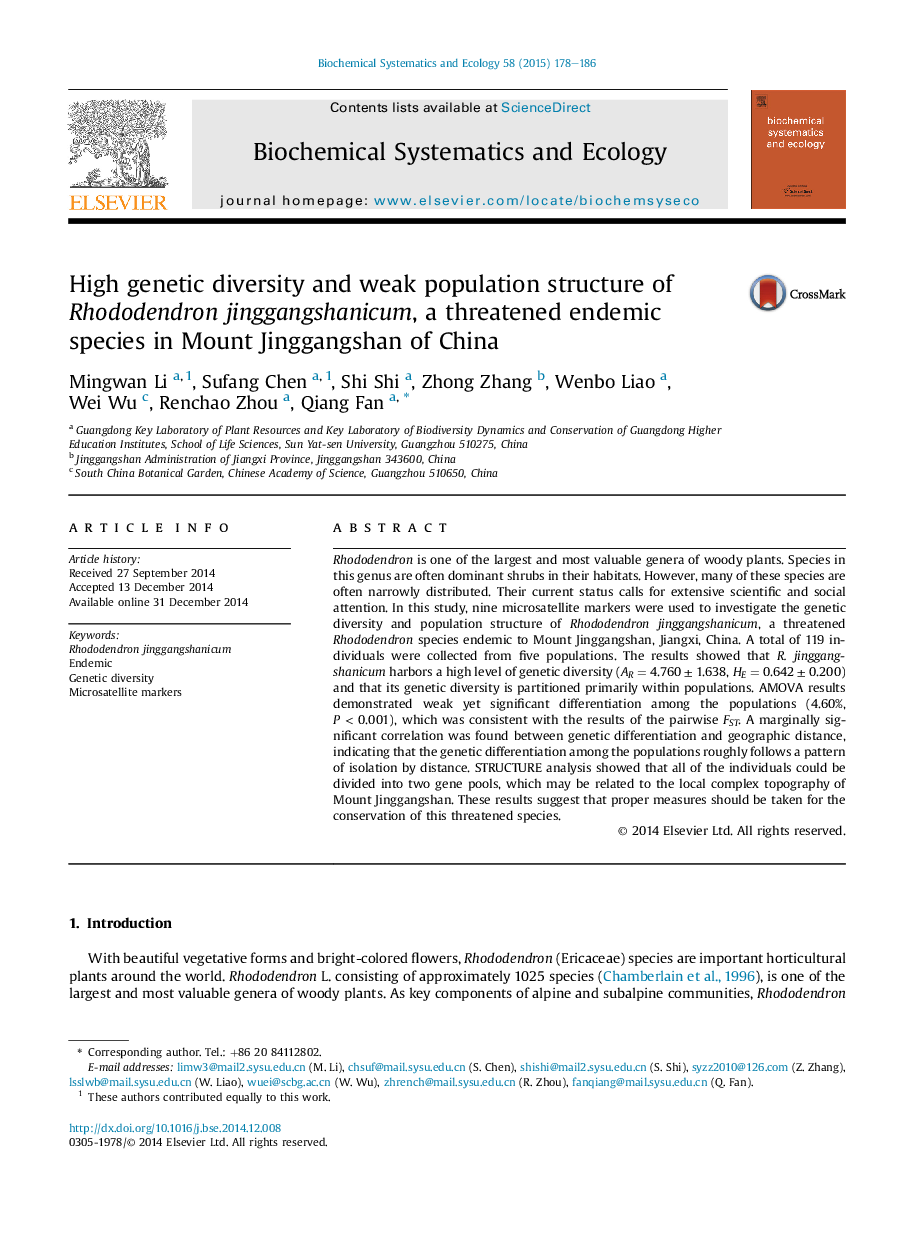| Article ID | Journal | Published Year | Pages | File Type |
|---|---|---|---|---|
| 1353883 | Biochemical Systematics and Ecology | 2015 | 9 Pages |
•We assayed population genetics of Rhododendron jinggangshanicum using nine SSR markers.•There are high genetic diversity and weak population structure among five populations.•Genetic differentiation among populations may reflect the local complicated environment.•Proper measures are urgently needed for the conservation of this species.
Rhododendron is one of the largest and most valuable genera of woody plants. Species in this genus are often dominant shrubs in their habitats. However, many of these species are often narrowly distributed. Their current status calls for extensive scientific and social attention. In this study, nine microsatellite markers were used to investigate the genetic diversity and population structure of Rhododendron jinggangshanicum, a threatened Rhododendron species endemic to Mount Jinggangshan, Jiangxi, China. A total of 119 individuals were collected from five populations. The results showed that R. jinggangshanicum harbors a high level of genetic diversity (AR = 4.760 ± 1.638, HE = 0.642 ± 0.200) and that its genetic diversity is partitioned primarily within populations. AMOVA results demonstrated weak yet significant differentiation among the populations (4.60%, P < 0.001), which was consistent with the results of the pairwise FST. A marginally significant correlation was found between genetic differentiation and geographic distance, indicating that the genetic differentiation among the populations roughly follows a pattern of isolation by distance. STRUCTURE analysis showed that all of the individuals could be divided into two gene pools, which may be related to the local complex topography of Mount Jinggangshan. These results suggest that proper measures should be taken for the conservation of this threatened species.
